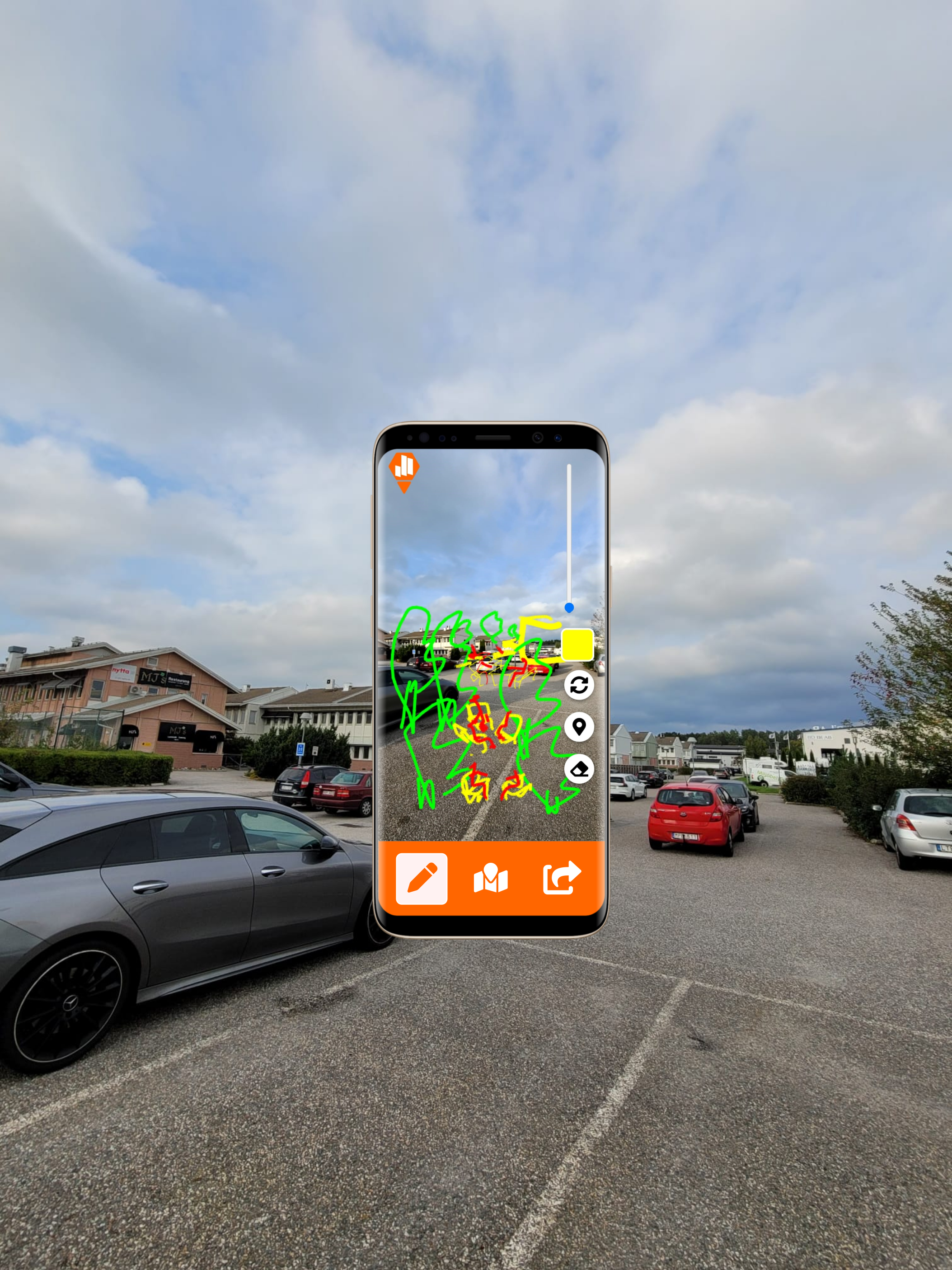Placemaking seems to be quite the fashion nowadays, with all the municipalities, practitioners, businesses, property owners, and all the like getting on the bandwagon. The word seems to command an air of coolness, progressiveness, vitality, prosperity, and so forth. But what about digital placemaking, and how might augmented reality (AR) play a part in it?

What is placemaking, first of all?
If you search the internet, you’ll find a lot of definitions on placemaking:
- Project for Public Space (2007): “a participatory process for shaping public space that harnesses the ideas and assets of the people who use it”
- Wikipedia: “a multi-faceted approach to the planning, design and management of public spaces”
- Wyckoff (2014): “the process of creating quality places that people want to live, work, play and learn in.”
- Moreira (2021): “… creating places and focuses on transforming public spaces to strengthen the connections between people and these places”
Here we can see quite a few important keywords and key phrases: “participatory process”, “public space”, “people”, “multi-faceted”, “creating places”. We can summarize these with two major dimensions: “places”, “people”.
Placemaking is, indeed, hard to define thanks to its multidimensionality (which is also its strength). However, I (CEO Raphaela) would define it a multi-dimensional paradigm on developing local communities, covering both physical and human aspects of the community. I define it as a paradigm, as placemaking is a huge branch of urban studies, urban planning, and urban design that over the past half-century have come to encompass a huge corpus of research and practice with many concepts, strategies, case studies, and best practices. A useful way to understand it is the phrase “creating places for people, creating and shaping community”.
To help practitioners understand how placemaking works, Project for Public Spaces promotes a “wheel of placemaking” with four aspects: uses and activities; comfort and image; access and linkages; sociability.
Among practitioners, the concept of “hardware” (physical space and design), “software” (activities and programming), and “orgware” (organization and management) is also important. A successful place depends on the synergy of all three together.

Can placemaking be digital?
Now a substantial portion of our lives are conducted on digital platforms. Social media, online games, and streaming platforms are but a few examples of digital services that connect people together. Many digital platforms are also “online public spaces” where people connect and interact with each other.
Let’s review some of the definitive keywords for placemaking:
- participatory process
- public space
- people
- multi-faceted
- creating places
Can a digital place be created with the above requirements? Yes, definitely.
Social media is a good example of online platforms as places. We can easily think of, for example, going onto Instagram or TikTok to interact with people and content. In our minds, they are potent places for us to spend time at.
Digital placemaking, therefore, will mean the creation of online spaces that allow people to participate in its creation and to perform activities that strengthen the sense of place for that online space.
An example would be the creation of a local tourism app with the participation of local residents, businesses and other stakeholders. The participatory nature of the process is critical in creating a stronger sense of place and community; the process is supercharged by the scalable capabilities of technology.

Augmented reality (AR) in placemaking
Augmented reality and placemaking has a rather special connection. This stems from two aspects of AR:
- AR is highly participatory, with an intimate invitation to participants to “walk through a portal” (the portal being their mobile phone, headset or other AR device) and experience the virtual element that’s “hidden” in the real world space, thus unlocking the imagination and fantasies of participants.
- AR superimposes virtual elements on the real world, and creates a “surreal” experience combining both the virtual and the physical.
AR has a sort of “magical” quality that conjures imagined objects and scenes in a real world space. Why would you expect a treasure box to suddenly appear floating in front of you on a street? But once it happens, you’re probably first struck by disbelief, then by awe, then by excitement, and so on. (This is why games such as Pokémon Go are so successful in capturing the imagination of adults and kids all over the world.)
Metvibee as an example
Metvibee is an AR platform for participatory urban design. AR is increasingly used in urban design as it can effectively communicate future designs in real world space; besides, the imaginative, “magical” nature of AR makes it the perfect technology to get stakeholders involved in actively shaping their community’s future.

The participatory design process forms an important part of place-based development (and other placemaking process) by allowing stakeholders to unleash their imagination and shape the design together, before the actual space is constructed. Augmented reality supercharges this process by allowing high level participation, imaginative creation, and active collaboration of stakeholders in shaping the design of public spaces.


You must be logged in to post a comment.